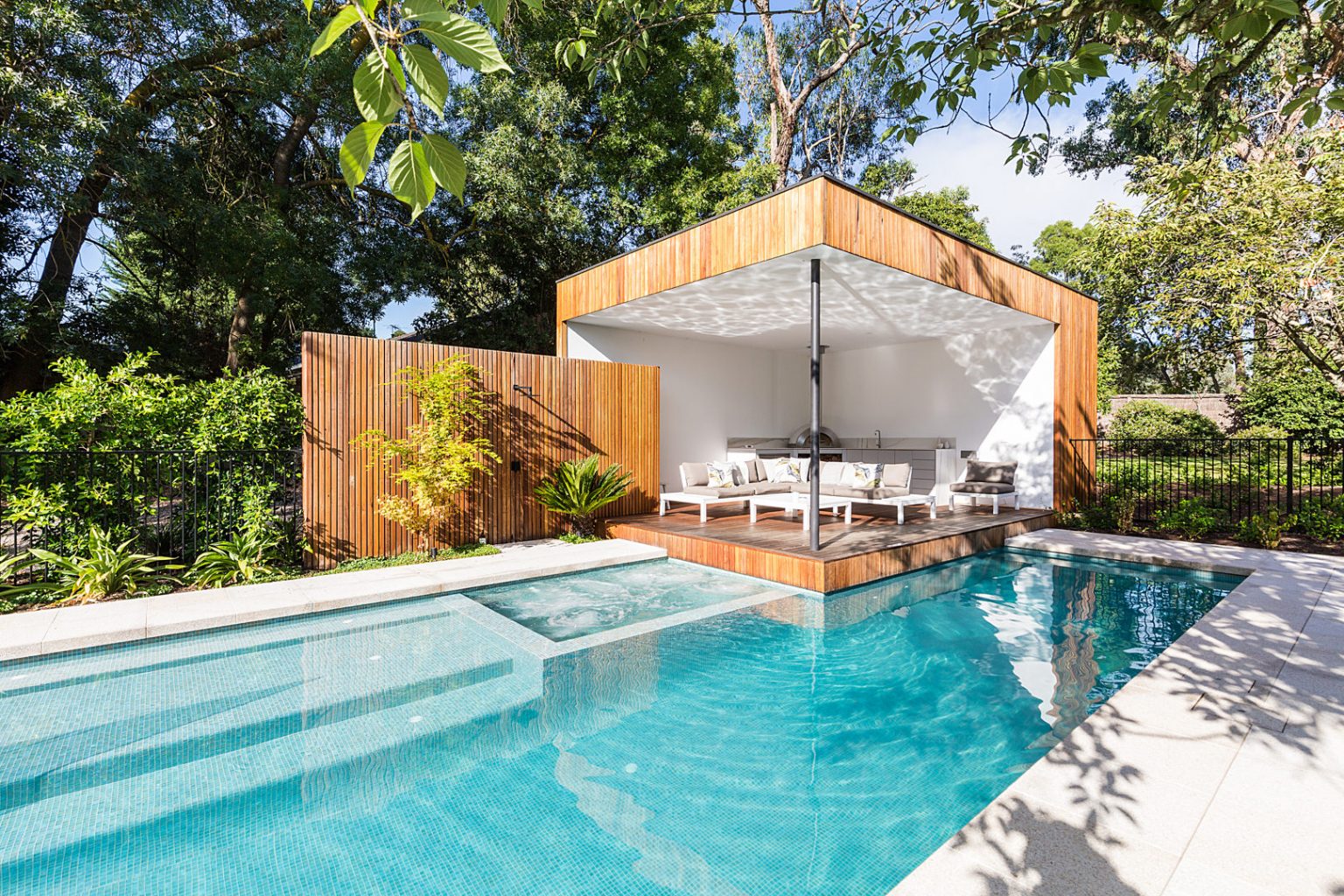Introduction
In recent years, the trend of building custom swimming pools has surged in popularity, as more homeowners seek to create personal oases in their backyards. A swimming pool is not just a place to cool off; it’s a symbol of luxury, a centerpiece for outdoor entertainment, and a sanctuary for relaxation. However, the process of new pool construction involves careful planning and meticulous execution to ensure that the final product meets all your expectations.
In this article, we will delve into the essentials of new pool construction, covering everything from initial planning to the different types of pools available. We will also explore the benefits of having a custom pool and provide a step-by-step guide to help you navigate the construction process smoothly. Whether you’re dreaming of a gunite pool, a fiberglass pool, or another type, this guide will provide you with the knowledge you need to make informed decisions.
Steps Involved in New Pool Construction
1. Initial Planning and Design
The first and most crucial step in new pool construction is planning. This phase involves defining your vision, setting a budget, and consulting with professionals to develop a comprehensive design plan. Key considerations during this stage include:
- Purpose: Determine the primary purpose of the pool. Is it for recreation, exercise, entertainment, or aesthetic enhancement? Understanding your needs will guide the design process.
- Budget: Establish a realistic budget that includes not only the construction costs but also maintenance, landscaping, and any additional features you might want.
- Space and Location: Assess the available space in your yard and decide on the best location for the pool. Consider factors such as sunlight, privacy, and accessibility.
- Design Preferences: Think about the shape, size, and style of the pool. Do you prefer a sleek, modern look or a more natural, freeform design?
2. Choosing the Right Pool Type
There are several types of pools to choose from, each with its own set of advantages and considerations. The most popular options include:
- Gunite Pools: These are custom-built pools made from a mixture of cement and sand, sprayed over a steel framework. Gunite pools are highly durable and offer flexibility in terms of shape and size.
- Fiberglass Pools: These are pre-fabricated pools made from fiberglass-reinforced plastic. They are known for their quick installation, smooth surface, and low maintenance requirements.
- Vinyl Liner Pools: These pools have a vinyl liner that fits into a pre-constructed frame. They are cost-effective and offer a smooth surface, but the liner may need to be replaced periodically.
3. Permits and Regulations
Before construction begins, it’s essential to obtain the necessary permits and adhere to local building codes and regulations. This step involves:
- Researching Local Codes: Understanding the specific requirements for pool construction in your area, such as setback distances, fencing, and safety measures.
- Submitting Plans: Working with your pool contractor to submit detailed construction plans to the local authorities for approval.
- Inspection: Ensuring that the site is inspected at various stages of construction to comply with regulations.
4. Excavation and Site Preparation
Once the permits are in place, the construction process begins with site preparation and excavation. This involves:
- Clearing the Area: Removing any existing structures, vegetation, or debris from the construction site.
- Marking the Layout: Outlining the exact shape and dimensions of the pool on the ground.
- Excavation: Using heavy machinery to dig the hole for the pool according to the specified dimensions and depth.
5. Structural Framework
The next step is constructing the structural framework of the pool. This varies depending on the type of pool being built:
- Gunite Pools: Installing a steel framework to reinforce the shape of the pool. The steel rebar is placed in a grid pattern and secured with wire.
- Fiberglass Pools: Delivering the pre-fabricated fiberglass shell to the site and carefully lowering it into the excavated hole.
- Vinyl Liner Pools: Assembling the pool walls and floor, then installing the vinyl liner to create a watertight seal.
6. Plumbing and Electrical Work
Proper plumbing and electrical systems are crucial for the functionality and safety of the pool. This phase involves:
- Installing Pipes: Laying out the plumbing system for water circulation, filtration, and drainage. This includes the installation of skimmers, drains, and return jets.
- Electrical Setup: Setting up the electrical components, such as pumps, heaters, lights, and control systems. Ensuring that all electrical work is performed by licensed professionals.
7. Finishing Touches
The final construction phase involves adding the finishing touches to the pool and surrounding area:
- Surface Finish: Applying the chosen finish to the interior of the pool. For gunite pools, this could be plaster, pebble, or tile. For fiberglass pools, the smooth surface is already built-in.
- Decking: Installing the pool deck, which can be made from materials such as concrete, stone, pavers, or wood. The deck provides a safe and attractive area for lounging and access to the pool.
- Landscaping: Enhancing the aesthetic appeal of the pool area with landscaping features such as plants, trees, and lighting.
8. Filling and Balancing
Once construction is complete, the pool is filled with water, and the chemical balance is adjusted:
- Filling the Pool: Gradually filling the pool with water, ensuring that the pressure on the pool walls is evenly distributed.
- Balancing Chemicals: Testing the water chemistry and adding the necessary chemicals to achieve the proper pH, alkalinity, and chlorine levels.
9. Final Inspection and Handover
Before the pool can be used, a final inspection is conducted to ensure that all work has been completed to the required standards:
- Inspection: The local building authority conducts a final inspection to verify compliance with safety and construction regulations.
- Handover: The pool contractor provides a thorough walk-through, explaining the operation and maintenance of the pool. This includes guidance on using the filtration system, maintaining water chemistry, and performing routine maintenance tasks.
Key Considerations for New Pool Construction
1. Budget Management
Budget management is crucial to avoid overspending and ensure that you get the best value for your investment. Key tips include:
- Set a Realistic Budget: Establish a clear budget that covers all aspects of pool construction, including materials, labor, permits, and landscaping.
- Prioritize Features: Decide which features are essential and which are optional. This helps in managing costs and focusing on what matters most to you.
- Plan for Maintenance: Consider the long-term maintenance costs, including cleaning, chemical treatments, and potential repairs.
2. Choosing the Right Contractor
Selecting a reputable and experienced pool contractor is vital for a successful project. Consider the following:
- Research and Reviews: Look for contractors with positive reviews and a strong track record of successful projects.
- Portfolio and References: Ask to see a portfolio of previous work and request references from past clients.
- Clear Communication: Choose a contractor who communicates clearly and listens to your needs and preferences.
3. Design and Aesthetics
The design and aesthetics of your pool should reflect your personal style and complement your home’s architecture. Key elements include:
- Shape and Size: Select a shape and size that fits your yard and meets your functional requirements.
- Material and Finish: Choose materials and finishes that match your desired look and feel. Consider options like tile, stone, and aggregate for added visual interest.
- Lighting and Features: Incorporate lighting and water features to enhance the pool’s ambiance and functionality.
4. Safety and Accessibility
Ensuring the safety and accessibility of your pool is paramount. Important considerations include:
- Fencing and Barriers: Install a secure fence or barrier around the pool to prevent unauthorized access, especially for children and pets.
- Safety Covers: Use safety covers when the pool is not in use to prevent accidents and keep the pool clean.
- Easy Access: Design the pool area with easy access points, such as steps, ladders, and ramps.
Benefits of Having a Custom Pool
1. Personalized Design
A custom pool allows you to create a unique and personalized design that reflects your style and meets your specific needs. You have the freedom to choose the shape, size, features, and materials that best suit your vision.
2. Enhanced Property Value
Adding a custom pool can significantly increase the value of your property. A well-designed and maintained pool is an attractive feature for potential buyers, making your home stand out in the real estate market.
3. Improved Lifestyle and Health
A swimming pool offers numerous health and lifestyle benefits, including:
- Exercise and Fitness: Swimming is an excellent low-impact exercise that improves cardiovascular health, muscle strength, and flexibility.
- Relaxation and Stress Relief: The soothing effects of water and the ability to unwind by the pool contribute to mental and emotional well-being.
- Social and Family Time: A pool provides a perfect setting for social gatherings, family fun, and creating lasting memories.
4. Entertainment and Recreation
A custom pool transforms your backyard into an entertainment hub. You can host pool parties, barbecues, and other outdoor activities, making your home the go-to destination for friends and family.
Conclusion
New pool construction Central Texas is a significant investment that can transform your backyard into a luxurious and functional outdoor living space. By understanding the essential steps and considerations involved in the process, you can make informed decisions and ensure a successful project. Whether you opt for a gunite pool, a fiberglass pool, or another type, the benefits of having a custom pool are immense, from enhanced property value to improved lifestyle and health.
Take the first step towards creating your dream pool by starting with a clear plan, choosing the right contractor, and prioritizing safety and aesthetics. With careful planning and execution, your new pool will become a cherished feature of your home, providing enjoyment and relaxation for years to come.










